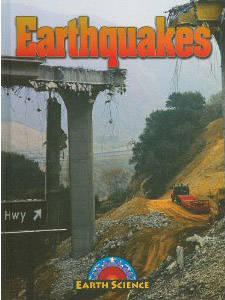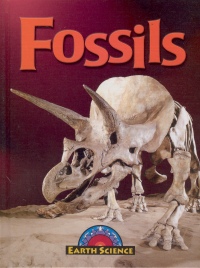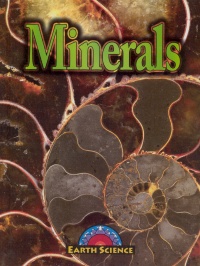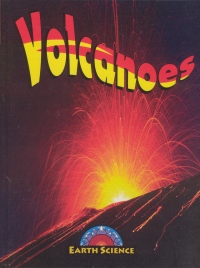| ________________
CM . . .
. Volume XVII Number 27. . . .March 18, 2011 
 |
Earthquakes. (Earth Science).
Jennifer Nault.
New York, NY: Weigl (Distributed in Canada by Saunders Book Company), 2011.
24 pp., pbk. & hc., $11.95 (pbk.), $25.70 (hc.).
ISBN 978-1-60596-965-7 (pbk.), ISBN 978-1-60596-964-0 (hc.).
Subject Heading:
Earthquakes-Juvenile literature.
Grades 3-5 / Ages 8-11.
Review by Suzanne Pierson.
****/4
|
| |
|
 |
Fossils. (Earth Science).
Megan Lappi.
New York, NY: Weigl (Distributed in Canada by Saunders Book Company), 2011.
24 pp., pbk. & hc., $11.95 (pbk.), $25.70 (hc.).
ISBN 978-1-60596-974-9 (pbk.), ISBN 978-1-60596-973-2 (hc.).
Subject Heading:
Fossils-Juvenile literature.
Grades 3-5 / Ages 8-11.
Review by Suzanne Pierson.
****/4
|
| |
|
 |
Minerals. (Earth Science).
Patricia Miller-Schroeder.
New York, NY: Weigl (Distributed in Canada by Saunders Book Company), 2011.
24 pp., pbk. & hc., $11.95 (pbk.), $25.70 (hc.).
ISBN 978-1-60596-977-0 (pbk.), ISBN 978-1-60596-976-3 (hc.).
Subject Heading:
Minerals-Juvenile literature.
Grades 3-5 / Ages 8-11.
Review by Suzanne Pierson.
****/4
|
| |
|
 |
The Rock Cycle. (Earth Science).
Melanie Ostopowich.
New York, NY: Weigl (Distributed in Canada by Saunders Book Company), 2011.
24 pp., pbk. & hc., $11.95 (pbk.), $25.70 (hc.).
ISBN 978-1-60596-968-8 (pbk.), ISBN 978-1-60596-967-1 (hc.).
Subject Headings:
Petrology-Juvenile literature.
Geochemical cycles-Juvenile literature.
Grades 3-5 / Ages 8-11.
Review by Suzanne Pierson.
****/4
|
| |
|
 |
Volcanoes. (Earth Science).
Jennifer Nault.
New York, NY: Weigl (Distributed in Canada by Saunders Book Company), 2011.
24 pp., pbk. & hc., $11.95 (pbk.), $25.70 (hc.).
ISBN 978-1-60596-971-8 (pbk.), ISBN 978-1-60596-970-1 (hc.).
Subject Headings:
Volcanoes-Juvenile literature.
Volcanism-Juvenile literature.
Grades 3-5 / Ages 8-11.
Review by Suzanne Pierson.
****/4
|
| |
|

excerpt:
Amber and Footprints
Not all plants and animals become stone fossils. Sometimes, a whole plant or animal is preserved. Then, scientists see exactly what the plant or animal looked like when it was alive. Millions of years ago, sticky sap oozed from pine tree stems, just as it does today. Sometimes, an insect or plant seed became stuck in the sap. Over time, the sap hardened and became another type of fossil called amber. (From Fossils.)
The more I see of these AV2 media enhanced books published by Weigl, the more I like them. Weigl includes a code on page 2 of each book that links the user to enhanced content including audio, video, web links, quizzes, activities, and a slide show � at no additional cost. Students go to the book first and then are led to further material which adds to and supports the content of the book.
Students who click on the audio links will hear portions of the text read to them. This feature will be useful for students who are learning English or are less fluent readers. The web links lead students to research sites and interactive games. The video icons let them watch information videos on the specific topic of each book. For those students who need an extra challenge, there are opportunities for students to expand each topic as well.
The "Earth Science" series looks at the geology of our world, covering the following topics: Earthquakes, Fossils, Minerals, The Rock Cycle, Rocks, and Volcanoes. Occasional examples from Canada are used, such as the 375-million-year-old fossil of a Tiktaalik roseae being discovered in the Canadian Arctic (Fossils). Many examples used are from different countries around the world, although the majority of the examples are from the United States. Given the universal nature of the topic and the use of examples from around the world, the books are very appropriate for Canadian classrooms and libraries.
Although written by several different authors, the books follow a similar format. I did not review Rocks but each of the other books begins with a brief explanation of the specific geological topic of that book. Included in most of the books is a world map identifying the important locations, such as "Minerals around the World," "Fossils around the World," and "Major Volcanoes around the World." There also is a section on careers in each field, for example "What is a Geologist?" or "What is a Seismologist?"
Each book also includes a summary of the information, titled "Seven (or Eight) Facts about...," and "Brain Teasers," which reviews the content. "Science in Action" provides easy to follow instructions for a follow-up activity, such as how to build an earthquake fault model, or better still, how to make your own baking soda and vinegar volcano. Fun learning.
Interspersed throughout are short Eco Notes. For example,
Until recently, it was thought that all earthquakes had been caused by natural processes. Scientists have found, however, that Human activities can help cause earthquakes. Activities such as mining, oil drilling, and building dams can shift where large amounts of weight sit on Earth's crust. In 2008, a very large dam built in China may have helped cause an earthquake in Sichuan region. Nearly 80,000 people were missing or killed during this earthquake. (From Earthquakes.)
The final page of each book instructs students to log on to www.av2books.com and explains the resources available. Although the books explain that the dynamic nature of the Internet means that some links may have changed or no longer be available, everything that I tried was functioning and appropriate. The books also include a table of contents, simple glossary and index.
Earthquakes includes up-to-date reference to the massive earthquake in Haiti in 2010. In addition to including the Haiti earthquake in the Earthquake timeline information in the book, there is also a link to a video of the aftermath of the earthquake when you log on to the additional resources.
Fossils includes activities such as "Make Your Own Footprint" to help young readers understand the process of fossilization. Readers are also encouraged to engage in further learning on the "Fossils around the World" page with questions to research online.
Minerals looks at how to identify minerals, different gemstones, birthstones and crystals. "The Myth of Amethyst" tells how an angry Bacchus, the god of wine, gave the mineral amethyst its colour and its name.
The Rock Cycle examines how rocks are "Sedimentary Rocks," "Metamorphic Rocks," "Magma," and "Igneous Rocks."
Volcanoes looks at types of volcanoes, types of eruptions, major volcanoes around the world, and the dangers of living near volcanoes.
This series is filled with engaging up-to-date information, supported by illustrative photographs and clear diagrams. The added bonus of having the enhanced content make them winners all round.
Highly Recommended.
Suzanne Pierson is a retired teacher-librarian, currently instructing Librarianship courses at Queen's University in Kingston, ON.

To comment
on this title or this review, send mail to cm@umanitoba.ca.
Copyright � the Manitoba Library Association. Reproduction for personal
use is permitted only if this copyright notice is maintained. Any
other reproduction is prohibited without permission.
NEXT REVIEW |
TABLE OF CONTENTS FOR THIS ISSUE
- March 18, 2011.
AUTHORS |
TITLES |
MEDIA REVIEWS |
PROFILES |
BACK ISSUES |
SEARCH |
CMARCHIVE |
HOME |




